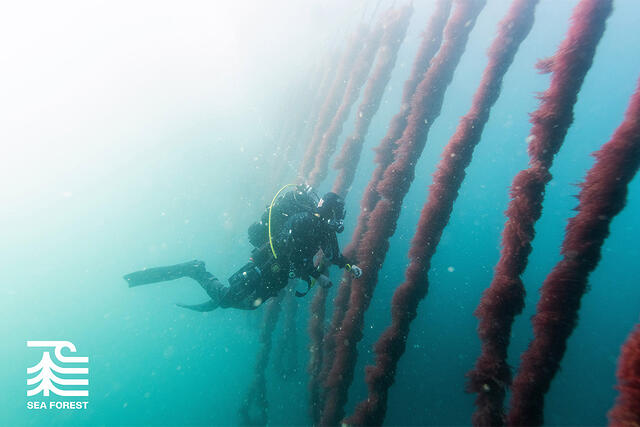
ACPPO webinar: The slippery science of seaweed biosecurity
There can be no doubt that our biosecurity system is complex. Although we divide our system into convenient areas (like plant, animal and marine), some problems don’t fit neatly into our prescribed boxes. For instance, how do we treat seaweed? It’s a plant, but it’s cultivated in ‘hatcheries’, which sound animal. It’s farmed, but in the marine environment. It can be both an aquatic product and a pest.
We focussed on this complex biosecurity quandary during National Science Week in August for the ACPPO webinar. Dr Gabrielle Vivian-Smith hosted the informative session with Professor Catriona Macleod, Program Leader (Sustainable Marine Resources), Marine Bioproducts CRC, and Dianne Maynard, a specialist advisor to the Marine Resources Division of the Tasmanian Government.
Seaweed aquaculture makes up 51% of global aquaculture, producing around 40 million tonnes of product per annum. In recent years, there has been an explosion in the number of aquaculture ventures exploring the incredible potential of this product. Seaweed has a whole range of uses in fertilisers, stimulants and bio char. It’s also sought after by the nutraceutical, cosmeceutical and pharmaceutical industries. Seaweed is also used to manage nutrient discharge from land-based production systems. But it doesn’t stop there. There are growing uses for seaweed in food, fibre, fuels, and building products. That’s before we get to the very hot topic of carbon sequestration and animal feeds. This has resulted in an influx in investment in sustainable seaweed and increasing intensification in the industry.
Professor Macleod told the 260 plus webinar attendees that governance and planning for biosecurity are developing as the industry emerges. “We don’t have good protocols around this. There isn’t anything in the aquatic code for the World Organisation for Animal Health around seaweeds. We don’t have international standards for notification, diagnosis and control of diseases,” she said.
“When you look at the national biosecurity strategy for Australia, we’re still in some of those early spaces around prevention, which is great. We’re in quite an interesting space as a developed country with the kind of infrastructure we have around biosecurity to be able to be quite proactive in the preventative side of things.”
Dianne Maynard elaborated on the specifics of seaweed biosecurity in Tasmania, where there are a growing number of farms, all of which are required to have biosecurity plans. “The first thing we kicked off was producing a seaweed disease guide for Tasmania. We did a literature review of seaweed diseases, looked at the species that were being grown in Tasmania, and we’ve pulled together a guide which we’ve provided to our farmers. It’s there more as a field guide, with lots of photos.”
Ms Maynard reported that the Tasmanian government also engaged researchers to do a seaweed baseline project and develop sampling protocols, to get ahead of any disease that might come about as a result of aquaculture intensification.
The ACPPO webinar series is a monthly program of webinars on plant health topics designed to share information between government, industry and researchers, hosted by the Chief Plant Protection Office. For more information on the series contact [email protected]


